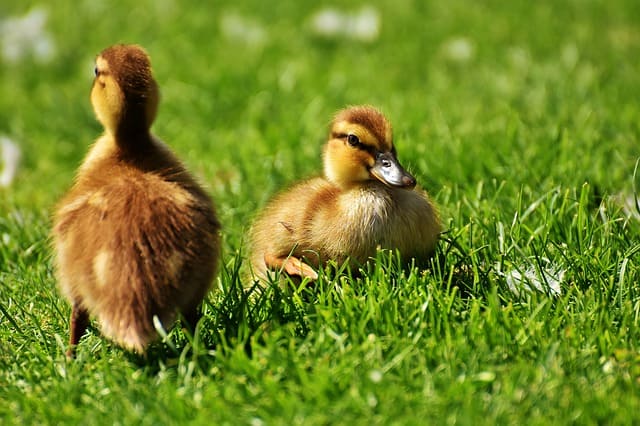A new study reveals that chickens exhibit protective mechanisms at the sight of a threat in the first four days after hatching and without any prior experience or training. To do this, the researchers tested the chicks reaction to different stimuli: the most dangerous for them was the expanding circle, which imitates a predator approaching them. The defence mechanism at the sight of the enemy in chickens, apparently, can be considered innate.
When meeting with a threat, the animals manifest a “hit or run” reaction formed during a long evolution: depending on the situation of their abilities, the individual either hides from the enemy or attacks it. Mobilization, however, is not always necessary, and most often animals, upon seeing the enemy, nevertheless try to go unnoticed: they either run away or remain motionless. It is not clear, however, whether the mechanisms used by animals for protection against a predator can be called congenital. Perhaps they are formed after birth during the first interaction with objects or during training.
Scientists led by Elisabetta Versace of the University of Trento decided to test this with home chicken. They have sufficiently developed primary defence mechanisms, relying mainly on a large field of view, which allows them to monitor the dangers on the ground and in the air at the same time. Chickens respond to an unfamiliar moving stimulus – peep or run away – just a few days after hatching.
The study involved 218 chicks hatching in the dark. Each chicken lived in a separate darkroom without the possibility of interacting with any objects other than food. On the fourth day, the chickens were placed for several minutes in the experimental zone, on the top of which a stimulus was projected: either an expanding circle (imitation of an approaching predator) or a line of running figures (imitation of the movement of a predator next to the chicken). The movements of the birds were evaluated by video (the camera was installed under the transparent floor of the experimental zone).
64 chicks took part in the first experiment: when they first encountered a potential threat, the chickens immediately began to demonstrate protective mechanisms. They reacted faster (p <0.001) to an expanding circle, and not to moving figures, and when they saw circles, the chicks accelerated, running away. Moving stimuli caused a different reaction: the chickens slowed down and froze, and the effect was long-term (their speed was lower for 30 seconds after the presentation of the stimulus).
In the following experiments, scientists decided to check what properties of the stimulus are necessary for the appearance of a reaction. In the second experiment, 58 chickens were shown either an expanding or narrowing circle: it turned out that a noticeable reaction (that is, a noticeable increase in speed) was caused by the expansion of the stimulus (p <0.005), that is, an imitation of its approximation; narrowing of the stimulus, or its removal from the chicken, did not cause a reaction.
Finally, in the third experiment, the remaining 59 chickens were shown to have an expanding circle and a darker one in order to check whether the colour of the stimulus affected the chicken reaction. Again, the expanding stimulus caused more (p <0.001) faster response and increased speed – the colour turned out to be unimportant.
The author of the work managed to show that protective mechanisms before a possible threat appear in chickens much earlier than previously thought, and also do not require any preliminary acquaintance with a potentially dangerous stimulus for them or parental training. The protective response of chickens is thus provided by innate mechanisms.
